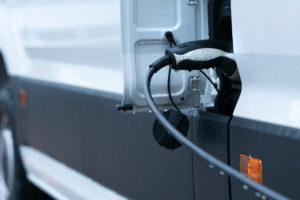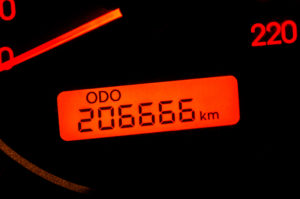Charging & infrastructure are still lacking to allay some people’s fears of range anxiety. But for EV fleets especially, smart planning and digitalization is key.
This is the last of a 3-part blog series on the challenges of vehicle electrification.
Read part 1 — on the challenges of electric vehicle transition
Read part 2 — on the challenges of electrifying commercial transport
EV charging infrastructure (EVCI) and grid capacities for supporting millions of EVs are still lacking in most countries that are electrifying transportation. The EU alone should have 6.8 million public charging stations by 2030 to keep up with the transition to electric vehicles — and the 55% CO2 emissions reductions goal. The EU policy, Fit for 55 additionally specifies truck & bus emissions reductions for 30% (up for revision) by 2030. Commercial EV fleets are growing in the direction of a depot–charging approach, which comes with totally different requirements to public, destination, or home-charging. New areas for development have opened up with dozens of charge point operators (CPO), charge station manufacturers, E-mobility service providers (EMSP) and electricity providers. But so have many new challenges.
Charge station accessibility challenges
Under the European Union Alternative Fuel Infrastructure Directive (AFID) recommendations, the ideal ratio to ramp up charging infrastructure is 1 public charge-point per 10 light-duty EVs. This ratio does vary for better or worse depending on the country but is no longer in balance with the charge-point availability versus EV sales ratio (or the 6.8 million goal).
One real problem for Europe’s charging infrastructure is the imbalance of EV adoption versus charging station deployment across the continent.
Currently in Europe, the majority of public chargers are spread across only the Netherlands, Germany and France. And those are distributed mostly in urban zones along the Trans-European Transport Network (TEN-T), leaving rural areas neglected. This not only leaves eastern European countries more in the cold, but also countries with more remote countryside and less population, like Norway or Spain.
To compound the challenge, most charge points across Europe & the UK are slow AC chargers, and less so the fast- or ultra-fast DC chargers needed for faster charging and longer-distance travel.
The thing is it would only take a relatively small amount of investment to tackle Europe’s public EVCI challenge — an estimated €8 billion per year. That’s only 18% of the investment put into the EU high-speed internet and 5G network project.
So, what’s holding the rollout up?
Speeding up the charging infrastructure rollout
A dizzying bunch of additional hazards has been outlined by a great ACEA paper — including intervention recommendations in tech, policy & investment to clear the road of Europe’s EVCI blockers.
These are just a few…
- Lead times for EVCI construction permit approvals can take up to 18 months in the EU.
- Lead times for network extension or substation approvals can take up to 8 months.
- Lead times of up to a month for EVCI hardware installation due to overbooking and a shortage of qualified electricians.
Despite these and other challenges, motivation and means are in good supply. Still, much more has to be done to hit EU Green Deal goals and keep up with the EV boom.
Take note of these ACEA report masterplan recommendations:
- Streamline the infrastructure approval process within city & highway planning bodies with a standardized process for all stakeholders in order to minimize red tape.
- Define & create central bodies among EU member states to track & coordinate availability & progress of rollout and funding.
- Upgrade & implement incentive schemes for EV purchasing to include EVCI and grid upgrade subsidies.
- Better facilitate access and increase transparency for EVCI financing instruments.
- Ramp up the rollout of smart charging to reduce load on grid, consumer costs, and increase the overall share of renewable energy.
EVCI energy and grid supply
As the market share in electric vehicles and EVCI rises, so will electrical energy demand and grid capacity volume. To be proactive in reducing emissions, renewable energy should be the driver of electricity supply.
If the efficient transition can move forward and meet EU climate goals, grid reinforcements must happen in tandem to support this. With the transmission (high-voltage) of electricity, it’s distribution systems (medium- and low-voltage grids) that need upgrading. Such upgrades would be mostly in low-voltage for public & residential slow-charging capacities in the form of transformer upgrades & network extensions.
Public, slow charging will generate high demand, be most congested and highlight peak power issues. Fast-charging runs on medium-voltage power which are already stable grids. Nevertheless, depot-based (fast) charging will require transformers and distribution substation capacity upgrades to handle the concentration of more EVs in one hub. If obtaining permits, hardware and infrastructure construction are faster and more accessible, few problems need block the rollout.
The fact is, EVs alone will not zap the entire supply of renewable electricity (as the myth claims) as the rollout progresses. The biggest use will come from electrical heating, facility powering, production etc. as sustainable energy use grows.
Fleet charging operations challenges
Fleet charging infrastructure comes with its own challenges and is essentially a whole different animal compared to public charging. Estimates for 2030 see around 85% of charging for e-truck transport fleets being depot-based. Commercial fleets already incorporating eLCVs and eHDVs into their routing are also securing charging infrastructure for their depots & distribution hubs.
This is better said than done. As mentioned in part 2 of our blog series, a strategic electrification plan is key. Merely buying EVs and chargers and saying Go! is not recommended.
Why?
Among other things, to cut unnecessary spending and avoid business disruption. This includes fleet charging operations.
Optimizing charging operations
Let’s say you’ve already created a fleet electrification strategy and are progressing along your milestone plan. Only a minority of your mixed fleet is electrified, and you have ample charge points and sufficient energy supply & grid capacity to integrate them into tours & routing plans.
This, by the way, is the perfect time to learn how to adapt to and later scale electric vehicles in your fleet.
Just like transport & logistics route and delivery planning (ideally digitalized), charge planning is essential to maintain a smooth flow in fleet operations with EVs.
This is where one tool in our SaaS solutions — PANION Charging — comes in.
In a nutshell, PANION Charging analyzes your fleet vehicles, charging infrastructure, routing and delivery schedules to integrate EVs and generate the which, where & how long of charging schedules. All while timing charging windows cost-effectively to avoid energy grid peaks. Of course, it does a bit more than automating an otherwise complex plan. Have a look!
This kind of intelligent connectivity greatly optimizes a huge part of running electric vehicles — smart charging. The bottom line for any commercial fleet is: keep business flowing and keep costs to a minimum. Digitalized charging operations will be a deciding force for fleet frontrunners into the future.
How about you… electrified yet?




